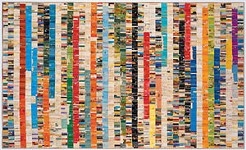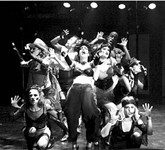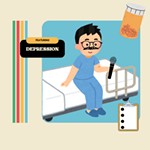A Piece of Work
In Wash, influential media artist Bill Lundberg projects video loops of hands being washed onto the bowls of three white sinks, calling to mind our culture's fears, now deeper than ever, of dangerous filth that might do us harm.
By Molly Beth Brenner, Fri., March 7, 2003

WASH, 2001
Video installation by Bill Lundberg in "Beyond the Academy"Arthouse, through March 9
Three white sinks catch my eye in a darkened hall of Arthouse on Congress. From across the room, each generic, identical bowl appears to be illuminated by an overhead light. The sinks' gurgling sounds and shimmer suggest they contain water, and as I walk closer, I see not only coursing water, but hands in each of the bowls: large, male hands in different stages of lathering, scrubbing, and rinsing. The light actually issues from video projectors casting images of hands and water into the sinks from above.
As I watch, one pair of hands finishes its meticulous lathering, rinses off, and pulls the stopper out of the sink to drain the water. A few moments later, as another pair finishes washing and drains the water from its sink, hands fill up the empty sink again, and the washing continues in a sort of never-ending, obsessive-compulsive relay.
This perpetual cleansing is mesmerizing at first. The sound of the water, the repetitive motion, and the image's mere familiarity draw my attention away from any possible meaning in the action; as a viewer, I'm busy noticing how remarkably real the images look. But slowly, I find myself wanting the hands to stop washing. The persistent scrubbing starts to make me feel itchy, like watching someone scratch the same spot on their body over and over again. Influential media artist (and Austin resident) Bill Lundberg, through the cleanest of images, calls to mind our culture's fears, now deeper than ever, of dangerous filth: bacteria, pollutants, even anthrax and other chemical agents intended to do us harm.
Bill Lundberg will speak on his recent work and "The Twelve Solitudes" Thursday, March 6, 7pm, at the Jones Center for Contemporary Art, 700 Congress. The talk is free.








